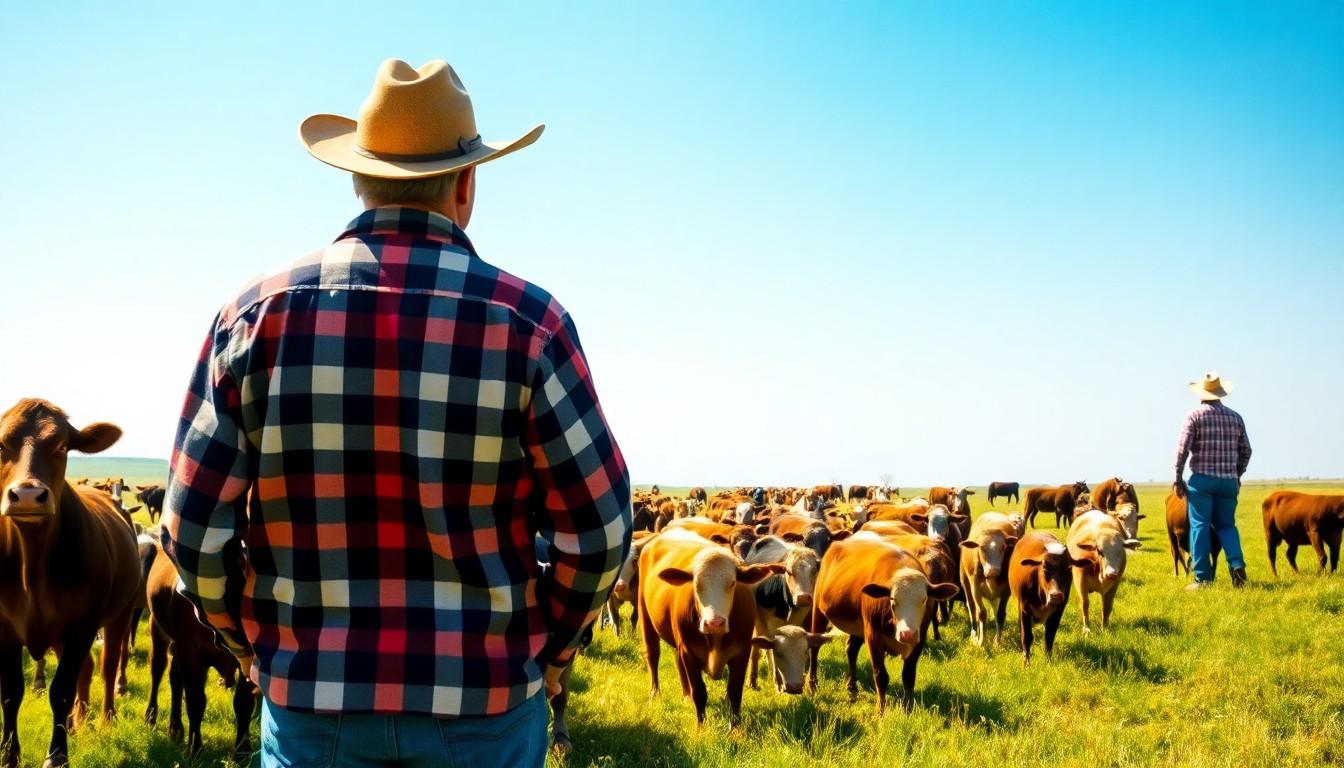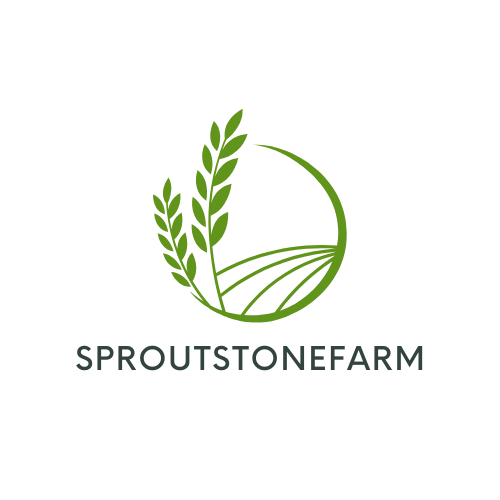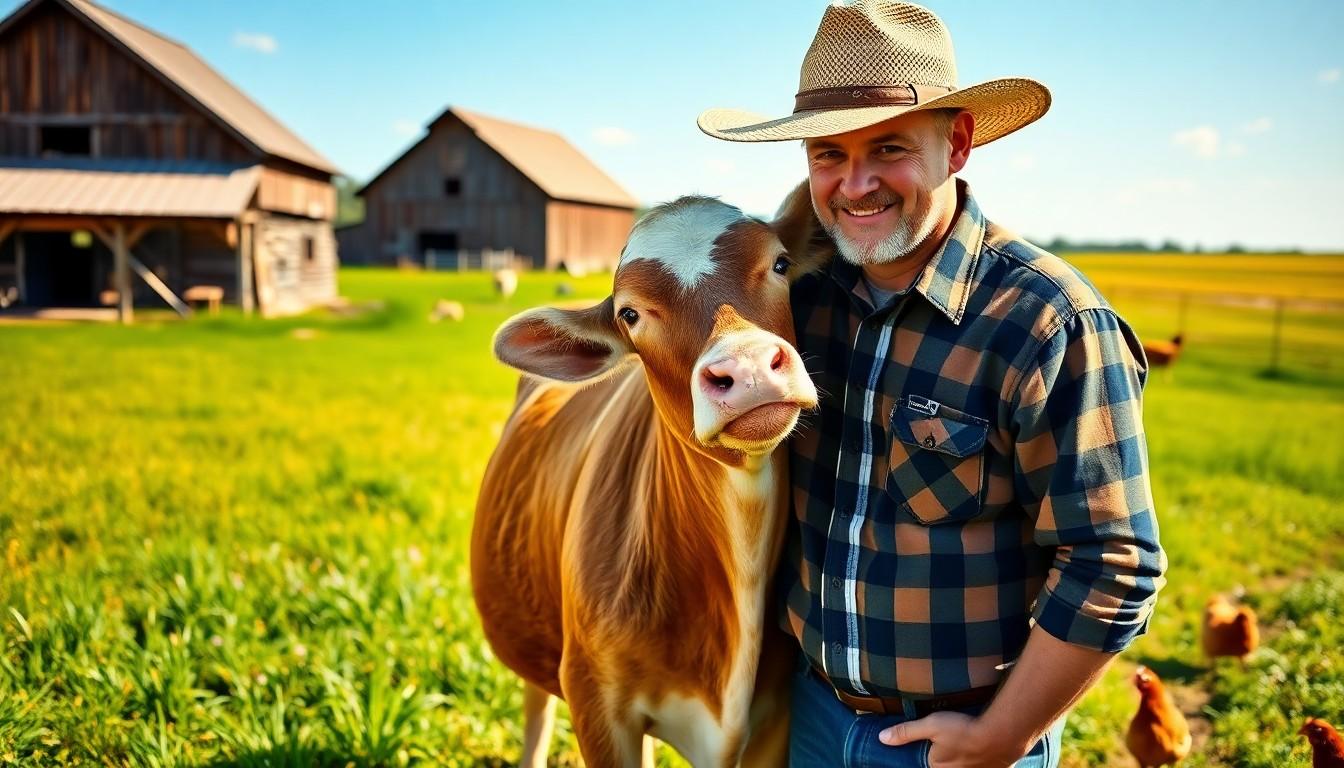Animal husbandry isn’t just about raising livestock; it’s a fascinating world where farmers become the ultimate animal whisperers. Whether it’s cows that think they’re lap dogs or chickens with more personality than your average sitcom star, the types of animal husbandry can turn any farm into a lively stage.
Types Of Animal Husbandry
Animal husbandry encompasses various practices aimed at breeding and caring for animals. This field includes livestock management, poultry farming, and aquaculture, each focusing on specific types of animals. Livestock management often involves cattle, sheep, and pigs, while poultry farming addresses chickens, turkeys, and ducks. Aquaculture refers to the breeding and harvesting of fish and aquatic plants.
Farmers develop unique relationships with their animals, impacting productivity and animal welfare. In livestock systems, animals receive tailored nutrition and healthcare, ensuring optimal growth and reproduction. Poultry farmers often create environments that stimulate natural behaviors, enhancing bird well-being and egg production.
Sustainable practices play a significant role in modern animal husbandry. Techniques such as rotational grazing and integrated pest management promote a balanced ecosystem. Producers increasingly adopt organic methods to meet consumer demand for ethically raised products. Efficient breeding techniques, including artificial insemination and genetic selection, further boost productivity while maintaining genetic diversity among populations.
Technological advancements continue to reshape animal husbandry. Precision farming, using data analytics, enables farmers to monitor animal health and performance in real time. Automated feeding systems and climate-controlled housing improve living conditions and streamline operations.
Types of animal husbandry: Animal husbandry remains a critical aspect of global food systems. Understanding the different types and practices within this field enhances knowledge about agricultural sustainability and food security. This comprehensive approach ensures a focus on quality animal care and efficient resource use.
Types of Animal Husbandry

Animal husbandry encompasses various systems and practices aimed at raising livestock and other animals. Each type reflects distinct approaches to management, care, and productivity.
Extensive Animal Husbandry
Extensive animal husbandry relies on natural resources and larger areas for grazing. Livestock typically roam freely in open pastures, promoting natural behaviors and health. Grazing systems ultimately yield lower stocking densities compared to intensive methods, often resulting in reduced stress for animals. Farmers control fewer inputs, which limits costs while supporting biodiversity. Examples include cattle ranching on vast plains and sheep grazing on upland pastures.
Intensive Animal Husbandry
Intensive animal husbandry focuses on maximizing production within confined spaces. This method often incorporates high-density housing and specialized feeding practices. Animal welfare remains a concern, prompting guidelines for housing and care. Producers utilize advanced technology for health monitoring, nutrition, and waste management, improving efficiency. Common practices include dairy farms with high output and broiler chicken production in controlled environments.
Semi-Intensive Animal Husbandry
Semi-intensive animal husbandry combines elements of both extensive and intensive systems. Farmers often use paddocks or fenced areas for grazing, allowing some natural behavior while maximizing productivity. This approach often leads to better animal health and welfare compared to strictly intensive systems. Nutritional supplementation occurs alongside grazing, ensuring balanced diets for animals. Examples encompass integrated farms with mixed livestock and rotational grazing practices.
Specialized Animal Husbandry Practices
Specialized animal husbandry practices focus on specific types of livestock or aquatic species, enhancing productivity while ensuring animal welfare.
Dairy Farming
Dairy farming centers on the production of milk and dairy products. Cows are commonly raised in clean, spacious environments that allow for natural behaviors. Farmers prioritize nutrition, providing balanced diets that include forage and concentrated feed. Milking techniques also evolve, ensuring comfort and hygiene. Milk quality is closely monitored to meet safety standards, benefiting both producers and consumers.
Poultry Farming
Poultry farming involves the raising of birds for egg and meat production. Chickens, ducks, and turkeys thrive in controlled conditions that promote health and growth. Farmers utilize practices like free-range systems to allow natural behaviors while maximizing output. Biosecurity measures reduce the risk of disease, protecting flocks and enhancing productivity. Feed formulations optimize growth rates, ensuring efficient resource use.
Aquaculture
Aquaculture focuses on raising aquatic animals and plants in controlled environments. Fish, shrimp, and shellfish are commonly cultivated to meet global demand. Water quality management plays a critical role in maintaining healthy ecosystems. Farmers often implement sustainable practices, such as polyculture systems, which promote biodiversity. Nutritional strategies enhance growth, ensuring efficient production while safeguarding the environment.
Sustainable Animal Husbandry
Sustainable animal husbandry emphasizes practices that protect the environment while ensuring animal welfare. Rotational grazing stands out as a method that enhances soil health and regenerates grasslands. Farmers moving livestock to different pastures allow vegetation to recover, promoting biodiversity.
Organic methods gain traction due to increasing consumer preference for ethically raised products. Such methods exclude synthetic fertilizers and pesticides, fostering cleaner ecosystems and healthier animals. Implementing these practices can lead to higher animal welfare standards and reduced environmental impact.
Technological advancements in sustainable animal husbandry leverage innovations to optimize resource use. Precision farming tools assist farmers in monitoring animal health, ensuring optimal living conditions. Automated systems help in managing feeding schedules and tracking health indicators, which results in healthier livestock and improved productivity.
Water quality management holds significance in aquaculture, a subdivision of sustainable animal husbandry. Farmers focusing on the quality of water in fish farming create healthier aquatic environments. This practice not only meets global demand for seafood but also minimizes ecological footprints.
Increasing awareness surrounding sustainability drives improvements across all types of animal husbandry. Integrating sustainable practices addresses concerns linked with intensive farming, such as overcrowding and disease spread. These efforts contribute positively to long-term food security and agricultural resilience.
Types of animal husbandry: Emphasizing animal welfare and environmental stewardship strengthens the foundation of modern farming practices. As consumers prioritize sustainability, farmers adapt to maintain market relevance while caring for animals and the planet. Sustainable animal husbandry represents a progressive approach to aligning agricultural practices with ecological responsibility.
A Resilient Agricultural Future
Animal husbandry plays a vital role in shaping sustainable agricultural practices and ensuring food security. By understanding the different types of animal husbandry, farmers can create environments that promote animal welfare while meeting consumer demands for ethically raised products.
The balance between productivity and sustainability is crucial as advancements in technology continue to transform the industry. As awareness of environmental impacts grows, farmers are increasingly adopting practices that protect both animals and ecosystems.
This evolving landscape reflects a commitment to responsible farming, where the health of animals and the planet go hand in hand. Embracing these principles not only enhances the quality of life for livestock but also contributes to a more resilient agricultural future.

